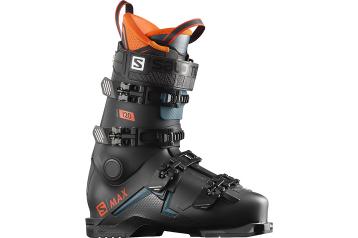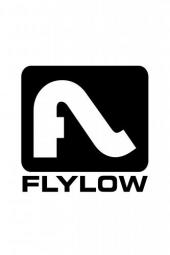The Gist
The test team's majority opinion states that the all new S/Max 120 knocked it out of the park with a shrink-wrapped fit for the low-volume foot as well as for a hyper-aware feel for the snow and immediate edge response in all manner of terrain. Not every tester had a foot and leg perfectly suited for the S/Max (skinny foot and long, slender leg) and so those guys dove into the new Custom Shell HD molding process, which works better and in half the time than before, we confirmed.
The Fit
Testers used a preponderance of 2's to score the fit of the S/Max 120, meaning evenly snug but not race boot plug tight. Testers felt that the even grip on the foot and lower leg was similar to that of the S/Max 130 Carbon, but slightly relaxed due to a softer liner and a bit more flexible shell. The S/Max 120 will appeal to a broad spectrum of skiers, so long as they're on the low volume end of the shape spectrum. Testers with wide forefeet, high insteps and big calf muscles were not dialed right off the rack in this one—some opted to custom mold the S/Max 120 and were pleasantly surprised with how well the new, faster system worked to even out the fit kinks.
Performance
Our lighter weight testers preferred this one over the much stiffer feeling S/Max 130 Carbon, and as one might expect, several of our testers who loved the S/Max 130 Carbon found this softer brother lacking in power and support by comparison. The general attitude on snow, however, is the same—agile precision and rapid response to foot steering paired with power on edge (for most). The polyurethane lower boot with a fiberglass Coreframe is paired with a polyurethane cuff on the S/Max 120. One tester suggested that heavier-handed skiers bump up to the S/Max 130 or S/Max 130 Carbon for their stiffer plastics and beefed up Coreframe inserts.
Cool Features
Kaprolene is the additive to polyurethane that allows for Custom Shell molding. New this year in certain models within the S/Max and MTN lines the Kaprolene used is pre-mixed in precise amounts into the polyurethane itself rather than as a somewhat random additive at the time of plastic injection. This creates a more predictable and defined molding response which, when used in the thin shelled S/Max and MTN boots, drastically reduced cook times from ten minutes to only two, molding from five minutes to only three and cool-down to five minutes. Our tests showed legit results without a degradation of performance, post-molding. This year Salomon offers a kit for bootfitters to drill out the Oversized Pivot cuff hinge point and replace it with a lateral cuff adjustment for skiers who need more stance angle adaptability than the Custom Shell process will provide. Cantology cant shims are available for the S/Max boots but require over-plating and routing along standard race boot protocols.













Kudos
Caveats